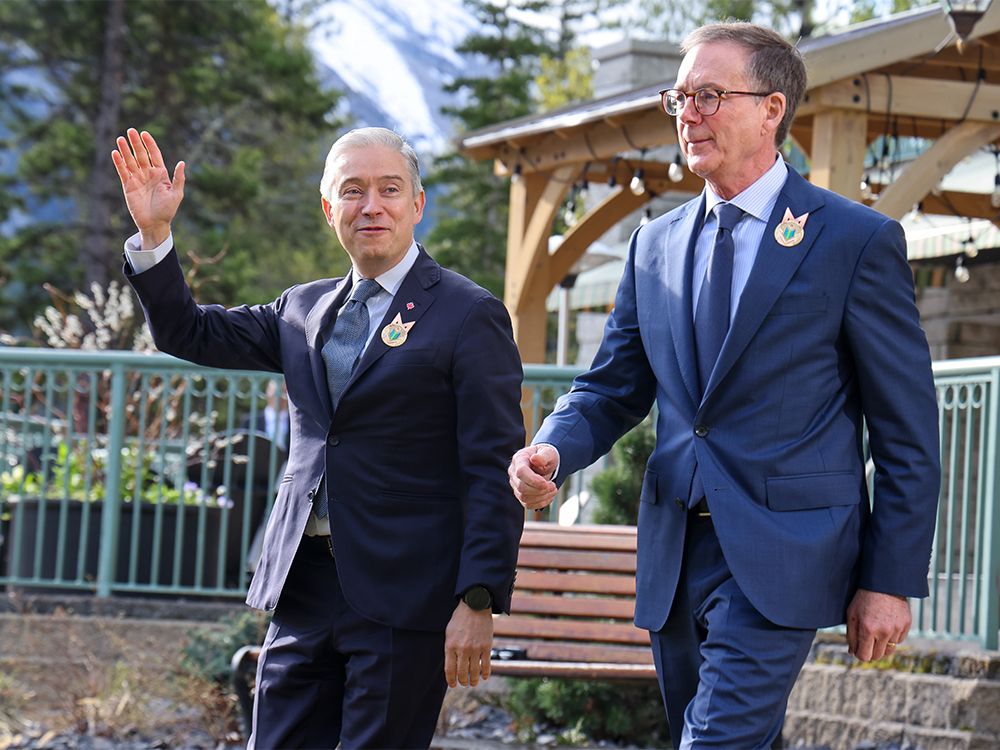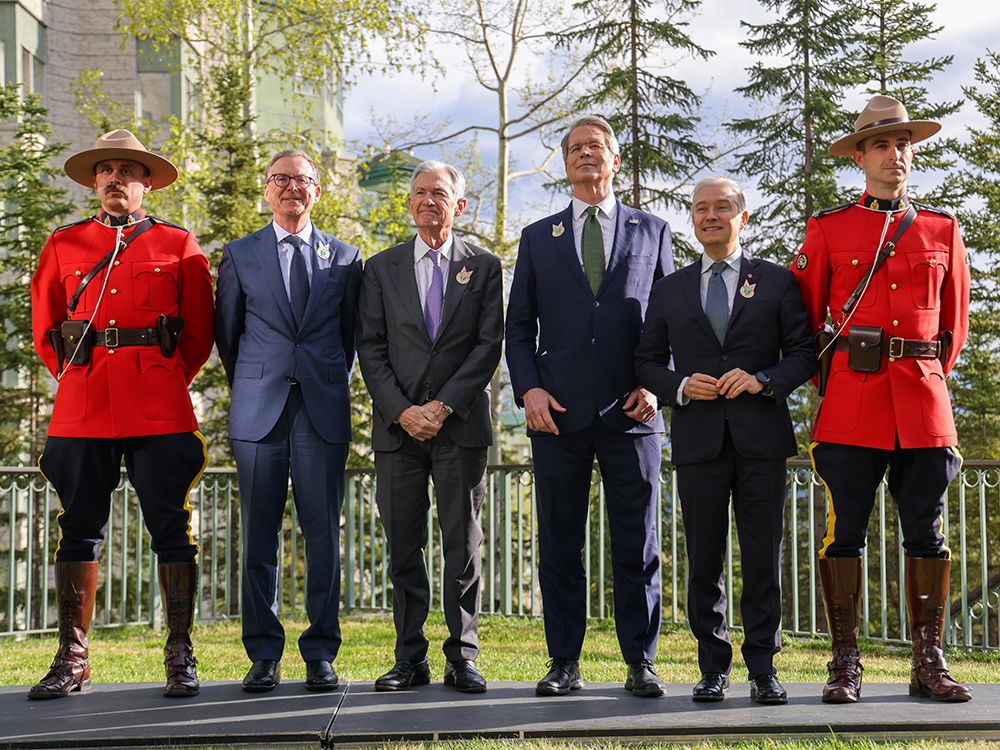Varcoe: Central Bank Chiefs Grapple with Stagflation Challenge in Banff
This week, central bank governors meeting in Banff are encountering multiple challenges, including escalating costs linked to a trade conflict and a volatile worldwide economy showing signs of slowing down.
This situation has left Bank of Canada Governor Tiff Macklem and his peers in G7 nations facing a dilemma: should they reduce interest rates to stimulate a sluggish economy, thereby exacerbating inflationary pressures?
Or will they refrain from lowering interest rates as worries about stagflation intensify?
“Stagflation – which refers to an economic scenario where growth slows down as inflation accelerates – is quite uncommon, and this situation has arisen due to the tariffs imposed by the United States,” stated Stephen Poloz, ex-governor of the Bank of Canada, during an interview on Wednesday.
When a central bank encounters this situation, they face a tough choice—what should I prioritize since I only have one instrument? Should I reduce interest rates to cushion the economic downturn, or stay vigilant and possibly raise them to prevent rising inflation from becoming entrenched… Stagflation undoubtedly presents a significant challenge for all.
Economists concur that a decelerating worldwide economic forecast is among multiple hurdles confronting G7 finance ministers and central bank governors at their gathering in Alberta this week, concluding on Thursday.
It comes before the gathering of the leaders from the seven nations who will
come together in Kananaskis in June
.
The G7 finance officials and central bank leaders are anticipated to tackle several intricate topics, such as major economic threats, strategies for fostering growth, designs of monetary policy frameworks, and challenges related to enhancing productivity through artificial intelligence.
The worldwide economy is anticipated to decelerate this year due to U.S. tariffs and the ongoing trade dispute.
“It’s making things difficult for central bankers at present, as they aim to decrease interest rates but find themselves constrained from doing so at their desired pace due to the pricing pressures caused by tariffs,” noted ATB Financial Chief Economist Mark Parsons on Wednesday.
It’s making their task much more difficult.
Related
Data published this week in Canada revealed that the year-over-year inflation rate rose by 1.7 percent in April, which is lower than the 2.3 percent increase seen in March.
The decrease was driven by reduced pump prices, which fell 18 percent compared to the previous year due to the federal government abolishing the national carbon tax and a decline in oil prices.
Excluding the impact of energy costs and the carbon tax, the inflation rate rose to 2.9 percent in April, an increase from 2.5 percent in March—consumers also kept feeling the strain at supermarket checkout lines.
“Superficially, everything seems fine, but upon closer inspection and deeper analysis, there are valid reasons for concern,” stated Charles St-Arnaud, the chief economist at Alberta Central, adding that core inflation exceeded 3%.
It places the Bank of Canada in a difficult position, as we’ve observed the labor market performing somewhat weakly. Typically, the bank might reduce rates to offer assistance, but given that inflation is at the upper limit of their target—or possibly even exceeding it—it becomes more challenging for them to argue for a rate reduction.

In the last twelve months, the Bank of Canada has lowered its main policy interest rate from five percent to 2.75 percent; however, it hasn’t made any adjustments since March’s change.
As economic growth slows down and joblessness increases, it raises queries regarding the most effective strategy to tackle escalating costs.
In a talk held in Calgary during March, Macklem addressed concerns regarding the threat of stagflation confronting the Canadian economy.
“The truth is that new tariffs, coupled with reciprocal tariffs, result in a less robust economy and increased inflation,” he explained to the crowd.
A less robust economy will exert downward pressure on inflation. Increased costs, new tariffs, a depreciated exchange rate, and disrupted supply chains will all contribute to upward pressure on inflation. We’re examining both these influences.
To the south of the border, the United States experienced a decrease in its gross domestic product for the initial three months of the year. Earlier this month, the Federal Reserve opted against lowering interest rates. The inflation rate in the U.S. stood at 2.3 percent in April when measured against the previous year’s figures.
Analysts believe a
a trade agreement has been made between the U.S. and the United Kingdom
This month might alleviate some of the uncertainties regarding trade, particularly when compared to early April. After the White House announced its retaliatory tariffs, they were subsequently put on hold for 90 days.

However, during his firm’s investor day event earlier this week, JPMorgan Chase & Co. CEO Jamie Dimon addressed ongoing trade worries as potential hazards.
“I believe the likelihood of increasing inflation and stagflation is somewhat greater than what others assume,” he stated.
Poloz, who served as the Governor of the Bank of Canada from 2013 to 2020, pointed out that the 10 percent base tariff rate the United Kingdom accepted from the US remains fairly substantial.
He compared the uncertainty and impact of tariffs on the economy to “putting sand in the gears of a pristine Ferrari. It simply doesn’t run as smoothly as it did before.”
He mentioned that the central bank governors, who remain apolitical, will be able to engage in an open conversation during this week’s gatherings.
Certain nations might prioritize worries over a stagnant economy, whereas others could be more preoccupied with inflationary issues.
“They would be discussing our primary issue, which is whether we’re facing a potential economic slowdown, possibly leading to recessions in multiple countries, or rising inflation due to the imposed tariffs,” stated Poloz.
We will all continue to experience stagflation, and it essentially comes down to which factor has the most significant impact on your economy.
Chris Varcoe serves as a Calgary Herald columnist.